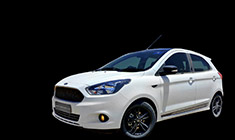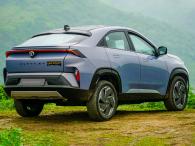News
Tata Curvv EV : Our observations after a day of driving
As per Tata engineers, the focus with the Curvv EV has been on the linearity of power delivery to make the driving experience smooth.
Powering the Curvv EV (55 kWh battery pack) is a permanent magnet liquid-cooled electric motor that produces 165 BHP and 215 Nm. The claimed range as per MIDC Part 1 Cycle is 585 km:

Something that a lot of people complain about EVs is that they all drive the same. While that is not completely wrong, there are some nuances to the power delivery that each manufacturer adds to make their product somewhat unique. The Curvv EV is currently the most powerful electric car in Tata’s portfolio. As per Tata engineers, the focus with the Curvv EV has been on the linearity of power delivery to make the driving experience smooth. You get 3 driving modes – Eco, City and Sport along with 4 levels of regeneration for different driving conditions. Engage D and take your foot off the brake pedal and the car crawls forward smoothly. Driving around with just the brake pedal while crawling in bumper-to-bumper traffic is a smooth affair.
Driving around in the city in ‘City’ mode seems appropriate and the Curvv EV responds well to accelerator inputs. There’s always enough power on tap to keep up with traffic and make quick overtakes. Driven with a gentle foot, the car feels very smooth and comfortable puttering around in the city. Switch to Eco mode if you want a smoother experience. The throttle response is dulled, but there is enough power available on demand at all times.
Cruising on the highway is quite comfortable in the Curvv EV. You reach the triple-digit speeds in no time. Tata claims a 0-100 km/h acceleration time of 8.6 seconds which is believable. Traction control makes sure that you get a clean launch without too much wheel spin. The car gets to 100 km/h fairly quickly and its top speed has been limited to 160 km/h. In terms of power delivery, the progress till 100 km/h is strong and above that the power delivery starts to flatten out slowly. This has been done to conserve the battery as the motor consumes more juice at high revvs. But when it comes to cruising on the highways and making overtakes, the Curvv EV is more than capable. For long-distance cruising, you can even use the Eco mode as the motor isn’t completely dull. Overtakes can be done comfortably even in Eco mode. If you want to make a quick overtake, you can always switch to Sport mode.
There are 3 driving modes to choose from. They're mapped specifically for different driving styles. What’s appreciable is that the motor's characteristics are distinct in each mode. A big relief here is that the typical Tata call when you change the drive mode is now gone! No more “Sport Drive Mode Activated”.
- City Mode: The default mode. The car always restarts in this mode, no matter what mode you last drove in. It's great for driving in the city as well as on the highway. Strikes a good balance between power and economy.
- Eco Mode: The mode to engage when you want the maximum range. The throttle response is dulled down, which results in a smoother drive in the city (less of that "torque-pull" effect). Power comes in more gradually when you ask for it. While there's enough grunt for day-to-day driving or cruising on the expressway, when you need to pull off a quick overtaking manoeuvre, you will want to engage one of the other modes.
- Sport Mode: The mode to engage when you want to have fun. Floor the A-pedal in Sport mode and watch the traction control warning light flash in the instrument cluster. In this mode, the throttle response is sharper, and the car just feels more eager to get a move on. However, it can feel too peaky for city driving and also eats up the battery faster. Use "Sport" when you're looking for fun on expressway runs.
Regenerative Braking
There are 4 levels of regenerative braking which can be adjusted using the paddles placed behind the steering wheel. We love adjustable regen settings as we can tune them to suit our mood. On level 0, there is no regeneration. Level 1 is what I found myself using the most as the regen is subtle and doesn’t feel very forced and unnatural. Level 2 has a bit more resistance and level 3 has maximum regeneration. I found levels 2 and 3 to be a bit too aggressive for smooth driving. But this is a personal opinion. Some people enjoy driving in maximum regeneration mode. You can also do one-pedal driving in many situations. However, do keep in mind that the car will never come to a complete halt. It will keep crawling forward without any throttle input.
Noise, Vibration & Harshness (NVH)
As is the case with electric cars, the NVH levels are good since there is no engine noise. The cabin insulation is also good, so you don’t hear a lot of ambient noise. On the outside, Tata has introduced an acoustic vehicle alert system or AVAS which is essentially a pedestrian alert system. Electronic music plays from the front end of the car till 20 km/h. The music is pretty loud on the outside and does the intended job. What some people might find irritating is that the music doesn’t go off when you are in ‘P’ mode. The car has to be turned off completely to stop the music. The system should’ve been directly linked with the ‘D’ mode so that you only get the music when on the move.
The bonnet gets insulation underneath:

Here’s the acoustic vehicle alert system or AVAS:

Range
Range is always one of the first questions that comes to mind when it comes to EVs. Tata claims a range of 585 km as per MIDC Part 1 Cycle for the 55 kWh variant and 502 km for the 45 kWh variant. These are indicative numbers as 1 cycle as per MIDC has an average speed of 18.6 km/h, without A/C, over a distance of 1.01 km where the maximum speed reached is 50 km/h.
Now Tata has also shared a number called the C75 range which is what they claim that 75% of the customers will get. The C75 range test that Tata has done factors in ambient temperature, load and A/C. A single cycle of the C75 test is done with an average speed of 40 km/h over a distance of 30 km where the maximum speed reached is 120 km/h. The C75 range for the 55 kWh variant is 400-425 km and that for the 45 kWh variant is 330-350 km.
Charging
The Tata Curvv EV gets the industry-standard CCS 2 charging port and you have 3 charging options – a 15A home socket, a 7.2 kW AC wall box charger and the DC fast charger. With your home charger, the 55 kWh variant of the Curvv EV takes 21 hours to charge from 10-100%. With the 7.2 kW AC wall box charger that you can get installed at your home, the charging time for 10-100% is 7.9 hours. The Curvv EV has a 1.2C charging rate which allows it to charge on higher capacity DC chargers as well (70 kW and above). The charge time for 10-80% charge on a 70 kW+ charger is 40 minutes. The Curvv EV also gets vehicle-to-vehicle charging (V2V) and vehicle-to-load charging as well (V2L). The V2V charging limit is 5 kVA and the V2L charging limit is 3.3 kVA.
Suspension

Ride Comfort
The Curvv EV uses a McPherson strut suspension at the front and twist-beam suspension with dual path strut at the rear. With time, EV suspension setups have started to mature and we don’t see bone-jarring setups very often. In the Curvv EV, the setup is on the stiffer side, but it’s very much livable. On bad roads, there is a fair bit of movement inside the cabin. The Curvv EV handles potholes and obstacles quite well. It’s not very silent in operation, but does its job well. However, big potholes are registered inside the cabin with a noticeable thud.
One of the contributors to the stiff ride is the 18-inch wheels with 215/55 section tyres. The recommended tyre pressure is 33 PSI. The lower variants (Creative & Accomplished) are equipped with 17-inch wheels with 215/60 section tyres. We expect the ride in the lower variants to be more compliant.
Handling & Dynamics
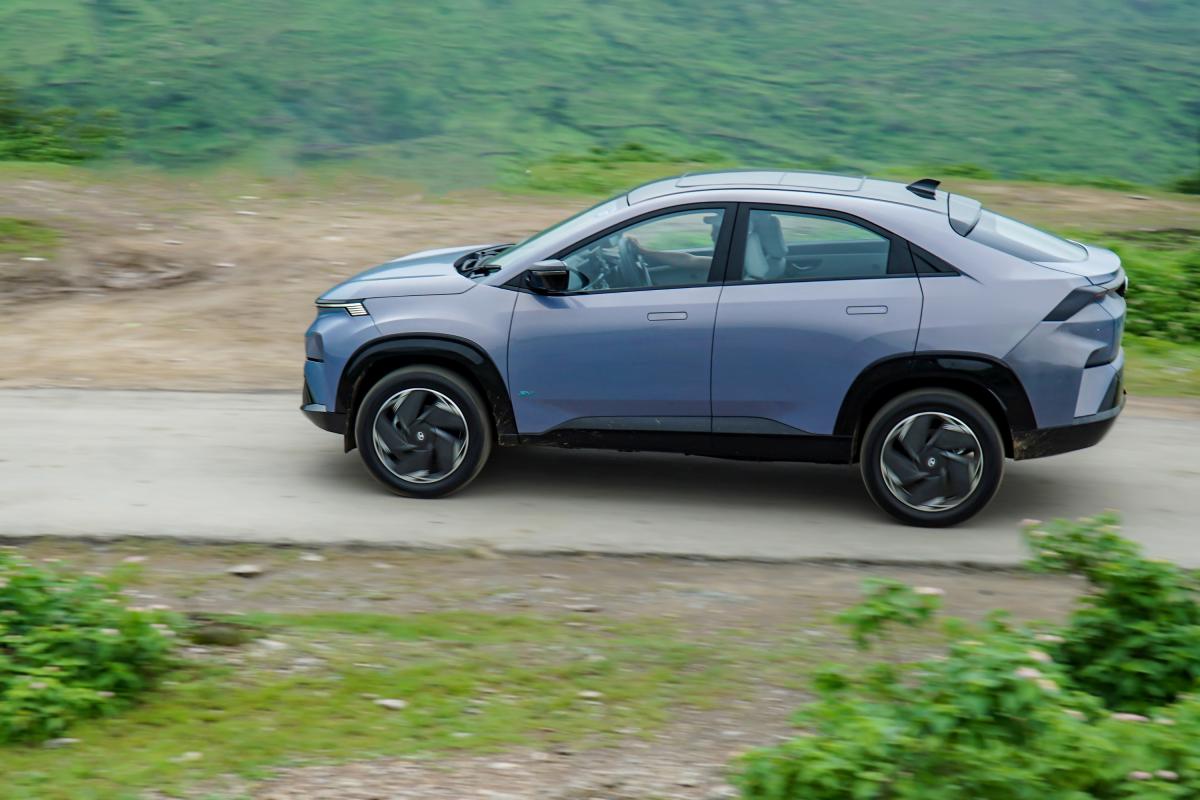
In a straight line, the Curvv EV is quite stable and you or your passengers won’t even notice that you are doing triple-digit speeds. At highway speeds, the Curvv EV is stable and there’s no unnecessary vertical movement. The stiffer suspension, 50:50 weight distribution and lower centre of gravity of the Curvv EV give it good handling characteristics. On twisty roads, the car feels composed through the corners. At times, the traction control kicks in when you’re getting out of corners. It also tries to regulate the wheel spin of the low rolling resistance tyres. They do squeal in protest when you’re pushing hard in corners. There is a hint of body roll, but it is well in check.
Steering
The Curvv EV gets an electric power steering unit which is nice and light in the city. You can easily maneuver the car around in the city and the turning radius at 5.35 meters is good too. The steering weighs up sufficiently as the speed increases and doesn’t feel disconnected. You get a good feel of what the tyres are doing. That being said, enthusiasts would expect more feedback and directness from the steering. At highway speeds, the steering weighs up noticeably and the resistance increases when the angle increases. Some people may find the steering weight to be inconsistent as well at various speeds. Overall, this is a decent steering setup and thankfully not a completely disconnected EPS like we see in some cars.
Braking
The Curvv EV gets disc brakes on all four wheels and they provide excellent stopping power. Panic braking situations are handled well and the car sheds speed effectively. However, the pedal feel isn’t very consistent and feels a bit spongy too. Hence, modulating the brakes while getting used to the feel of the pedal takes some time. The car is equipped with ABS + EBD, disc brake wiping, and panic brake alert.
Continue reading the discussion on the Tata Curvv EV on our forum.




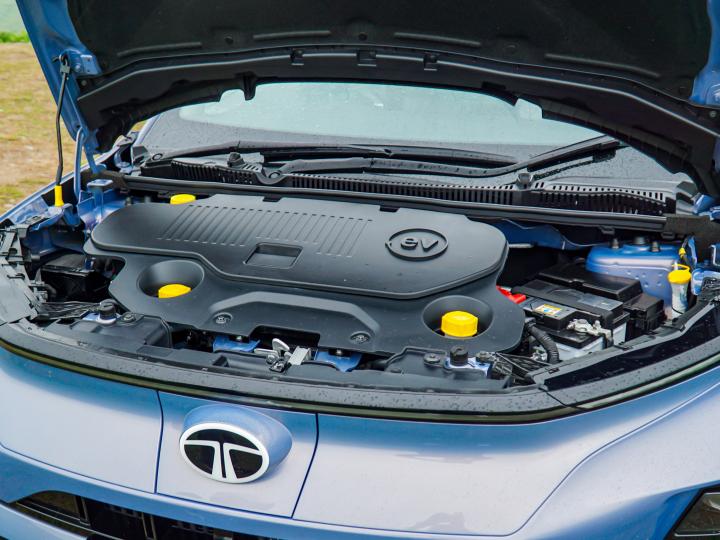
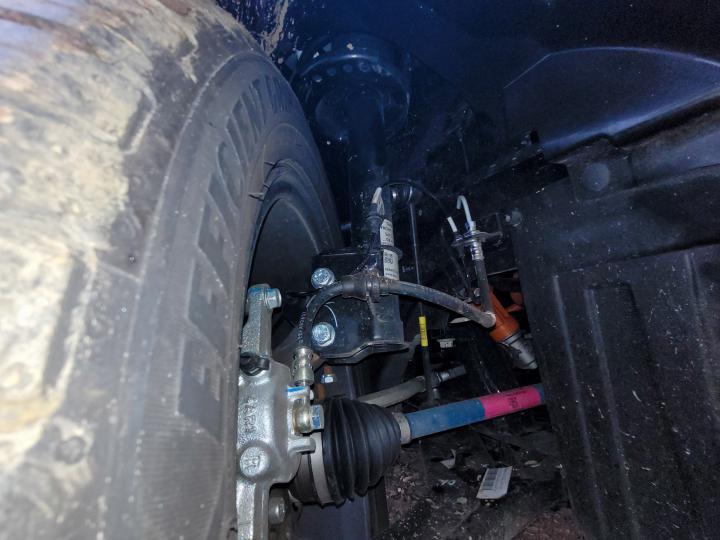







.jpg)
.jpg)





